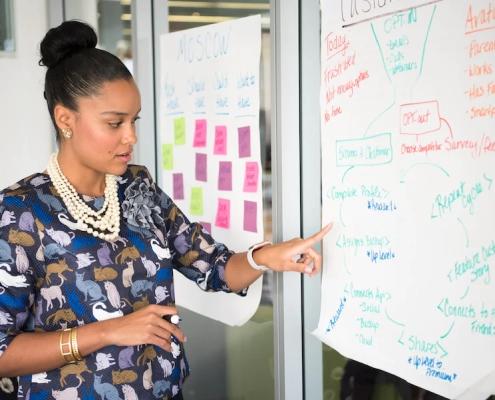Win-Win: Increasing Project Delivery Capability by Providing Opportunity to Your Teams
Providing opportunities to team members makes them individually more capable, which leads to more organizational capability for delivering projects. Here are things you can do – TODAY – to create this win-win environment.
- Encourage sharing of risks and issues that may arise. Project status can change based on what’s been completed, what’s delayed, what stakeholders are talking about, new ideas, and risks that arise. And you’re more likely to hear about them when you support your teams. Here’s how. Whether updates are positive or negative, thank people who share this information. Your first response should be “Does something need fixing?” followed by “What can we learn from this?” That way, you not only address project issues, but also create learning and growth opportunities for your project team members.
- Build in discussions of risk and learning. One agenda item for every project status meeting should be the status of existing risks and potential new risks. Periodically, include an agenda item for a team member to share something they’ve learned. This presents project work as a way for project team members to learn and grow. It also improves your project outcomes and provides incentive for people to join your project teams in the future.
- Help team members understand the business relevance of their project work. A WBS and short task names don’t convey the relevance of tasks to your team members. Take the time to help them understand how their deliverables fit into the big picture to improve the business. The deliverables you receive will be on target and your project team members will expand their business knowledge and opportunities for growth.
- Share the business’s impressions of your project. Often, project managers shield their project teams from business stakeholders, especially when business pressures cause wild reactions to status changes or preliminary project change ideas. But you, as project manager, should share how the business views the project and how its outcomes will be used. That deeper perspective helps the team grasp the strategic relevance of the project and builds capacity to produce results on future projects.
I’m a big fan of win-win approaches, so I know this is an abbreviated list of how to promote and benefit from a win-win focus. How have you promoted win-win in your organization and what other benefits have the organization and individuals received?
For more about working with teams, check out Daniel Station’s Project Management Foundations: Teams course.
Coming Up
One of the most frequent questions Chris Croft and I get is “Do I need project management certification?” quickly followed by “Which certification or certifications should I get?” Everyone’s journey is different, just like Chris and I took very different paths. So, we’re going to explore whether project management certifications are valuable, what else you can do to make yourself stand out, and finally, which certifications to look at if you decide you need them. Bring your questions to this informative and fun session. By the way, this topic is just one that we explore in our new course, How to Launch a Career in Project Management.
Register for the Office Hours session here. (The session recording is available on the event page after the live broadcast ends.)
_______________________________________
This article belongs to the Bonnie’s Project Pointers newsletter series, which has more than 42,000 subscribers. This newsletter is 100% written by a human (no aliens or AIs involved). If you like this article, you can subscribe to receive notifications when a new article posts.
Want to learn more about the topics I talk about in these newsletters? Watch my courses in the LinkedIn Learning Library and tune into my LinkedIn Office Hours live broadcasts.
_______________________________________











